At Crow, we believe in bracing our roots and using the traditional techniques and craftsmanship of our local artisans in textile making. These local artisans weave the richness of our culture into our clothes.
Ajrak is a form of ancient Indian printing that is traditionally hand block-printed using the resist-dye method, through eco-friendly natural dyes. Ajrak has been long established by the Khatri community of the Kutch desert in Gujarat. Ajrak textile prints have acted as an interpretive role in Sindhi nationalism, keeping the old tradition of block printing alive. It is distinguished with complex geometrical and floral patterns, expressed through bichrome colours of red and black usually.
The name of this printing is derived from the word ‘Azrak’, which means blue in the Arabic and Persian language. In the language Urdu, it also means ‘keep it for today’, which the local printers practise. The meaning of Ajrak is ‘keep it for today’ which is an Urdu word.
Artisans who practise the art of Ajrak printing have the immense skill, patience and precision. To complete it, there are approximately 14 to 16 different complex stages involving dyeing and hand block printing , which usually is completed in 14 to 21 days. The final output is handwoven hand block printed cotton, soft and gentle on the skin, accompanied by the highly luxurious manifestation, which is both satisfying to feel and appealing to the eye.
History
According to the Khatri Community, their sustainable craft has been around since the primal medieval times, ever since they started practising it across the banks of the river Sindh, which is currently known as Indus, in Pakistan.
In the 16th Century, these families were asked to migrate from Sindh towards Kutch in order of the King of Kutch. He recognised their artistry and wanted them to settle down in the arid land of Kutch, along with other artists such as hand dyer's, hand block printers, potters and hand embroiderers. The artists benefited by living there, as they had access to the river close to the village of Dhamadka, which aided them in faster production due to the convenient and favourable facility of washing the handwoven fabric instantaneously.
Lamentably, the capacity of the river was used up. Although it served a noble purpose for almost 400 years, the river dried up due to unfavourable weather conditions. Water became scarce and was not available from stored water tanks as well. Apart from this, the disastrous cumbersome earthquake in 2001 forced the craftsmen to relocate, nearby, which came to be known as Ajrakpur. Families thrive hereby expressing their art of Ajrak printing, which is also their primal source of income. Presently, the culture of Ajrak hand block resists printing is recited mainly in Kutch, Khavda, Dhamadka and Barmer, which is in Rajasthan.
The Process
The eternal artistry of Ajrak resists printing is done by hand, using wooden printing blocks that are also skillfully hand carved. The printing uses variegated blocks and design to fulfil a unique and one of a kind design structure. These designs rely heavily on geometry and symmetry. Thus, artists make use of tools such as a compass and ruler, to meticulously make drafts of the prints, ensuring perfect balance. A challenge faced in this craft is the perfect positioning since the pattern desire is to be fit perfectly on the whole 100% cotton fabric. The whole process of Ajrak has many banal and time-consuming steps that only some artists practise to the T, availing the original look of Ajrak.
- The base material used is often a dull colour, like grey, or a type of unbleached handwoven cotton fabric.
- In foresight of the process, the handwoven fabric is soaked, washed and treated with various eco- friendly substances like stem, sodium bicarbonate, castor oil, eruca Sativa oil, camel dung along with tamarisk or myrobalan.
- While soaking the handwoven cotton fabric, camel dung is immersed, which has the advantageous quality of making the fabric soft, ultimately fashioning a more comfortable garment. The alkaline pH of the dung also allows it to double as a bleaching agent.
- This is the first stage of actual printing, where the mud resist dye technique is used. This includes incorporating natural gum, lime and fuller’s earth which helps produce a white outline on the finished handwoven fabric.
- Using iron scraps, ferrous sulfate and millet flour, a navy blue outline of eco-friendly mordant are achieved which later produces the colour blank once developed in the compound alizarine.
- The same environmental-friendly mordant is also used to hand block print the filler.
- Since the subsequent indigo dyeing is deep in colour, a second resist treatment is printed to partially preserve the white bleached handwoven cotton fabric.
- Next, another layer of resist which comprises gum and fuller’s earth is exercised, along with an alum mordant. This third layer of resist aids in blocking the colour of indigo to seep in, while the alum is similarly treated with the compound alizarin, creating a natural red colour, which Ajrak is famously known for.
- A vat which has indigo is the solution into which the printed fabric is dipped into, to dye the unresisted areas. To ensure no leakage of colour, a copper vessel is used as it does not leave any colour print.
- The handwoven cotton fabric is assiduously washed to remove exuberant indigo, as well as de-gum the fabric.
- To further develop the rich red and black mordants, the handwoven fabric is carefully boiled in alizarin solution. After drying it as well, the coveted designs are again coated with the previous materials: gum, lime and fuller’s earth to prevent the deep colour of indigo from infiltrating.
- Finally, the fabric is washed once again to remove any unwanted substances like excess dye and resist from the surface of the cloth.
Block Making
To print on the designs, wooden blocks are used. These are hand-cut to particular sizes, which are then sanded repeatedly on a stone to achieve a levelled plane surface, which is also double-checked by a steel ruler. This process then goes on to be dipped in water, and then in a substance known as ‘wari’. This is a dry, powdered form of clay, which is also rubbed with ‘rohi’, which is granite stone. When rubbed in, the block causes friction. This act forms a white-ish layer on the surface of the block. Using the steel ruler, the block is again levelled by drawing on a baseline. Then, a compass is used to certify the correct angles to form a perfect square. To achieve this, diagonals are marked where the shape is quartered and additionally sixteenth. Finally, to transfer the pattern of the artists, intricate lines are etched and engraved onto the surface of the block.
Just like other materials, the blocks are also naturally and organically sourced and made. Sheesham wood is used as it is the softest usable wood. However, the process takes a while. The initial step, which involves soaking in oil, is implemented for almost 2 to 6 months before they are ready for the next step. Before and after each use, the blocks are thoroughly cleaned using natural mustard oil.
The patterns of the artists which are carved into the wooden blocks are habitually traditional. A few designs are inspired by Mohenjo-Daro times, and evidently, are highly-priced due to the originality and singularity of the composition. The designs are also customisable, based on orders from customers and their taste. Indubitably, the cost of these blocks varies, depending on factors such as the intricate design, whether it is traditional or contemporary.
Colours
The conventional practice uses only organic, natural, environmentally sustainable colours that are derived from vegetable dyes. Originally, prominent primary colours such as red, yellow, black and blue were used, yet due to changing taste, secondary colours such as green are also combined.
Fabric
The fabric used in Ajrak printing is usually Greige handwoven Cotton Fabric. In preparation, the handwoven cotton fabric is washed in soda ash to get rid of impurities. After drying the handwoven fabric, it is once again washed. To ensure precision, artists use a wooden table as their place of printing, where the handwoven cotton fabric is stretched over.
Tools
A wooden ‘jaali’, which is a frame, is utilised, containing a resist paste. This paste helps the layer of handwoven cotton fabric in picking up the aspired amount of colour. A needle is also used when carving the blocks, to ensure accuracy of the baroque designs. Depending on the convoluted designs, a particular thickness of needle is chosen, aiding in creating the appropriate vision of the artisans’ design.
Weather
Weather plays a important role in the craft of hand block printing. During seasons of white winter and pouring monsoon, the immense humidity and lack of sunlight slow down the process. As nights last longer, dyes take longer to dry as sunlight is limited, it comes slowly and leaves quicker still, leading to colour runs. Moreover, the moist and muggy air kindles the swelling of wood during monsoon. Because of this, additional care is required, as well as appropriate storage, which slows down the production pace in these seasons. However, all weather conditions including sunshine, rain and humidity, along with the water source, affects the resultant colour of any hand block printed or handwoven dyed textiles.
How we use this beautiful craft in Crow:
We, at Crow, design our collection keeping in mind the traditional printing method in our own contemporary way. Traditionally, all three types of printing blocks are used to create a certain kind of design including the outline and fill-in blocks. Adapting our own vision and design at Crow while also attuning the traditional tools in our own way makes us explore and dive into each type of block- the ‘Datta’, ‘Rekh’ and ‘Gad’, that individually create our unique Crow prints.
These exclusive prints are designed by the organic and abstract placements of our motifs, that break the typical repeat, creating original compositions. This way of production keeps human involvement as the major key to our creation.
We believe in creating subtle designs for the women of Crow. These printing clusters follow the highest level of sustainability in their hand processes - all the tools used are traditional and reused, along with the materials used and store colours, that are reusable buckets. These small steps, alongside using resources mindfully, add up to greater steps towards effectuating sustainability.
We only work with environmentally friendly organisations and artisans who help us support to promote sustainability.
All our collections are earth-friendly, we take pleasure in calling ourselves the eco-sustainable clothing brand.

